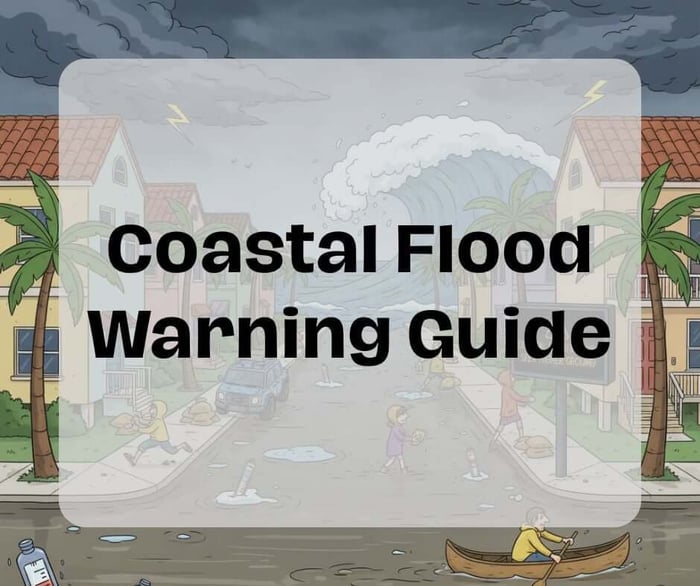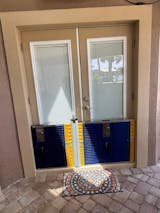Table of Contents
Picture this: you’re sipping coffee when an alert pops up on your phone – “Coastal Flood Warnings in effect for Naples, FL.” The sky looks calm, but you can already hear water trickling into your yard. Fear and frustration set in. Will this be another round of cleanup? Another round of costly repairs? If this sounds all too familiar, take a deep breath. You’re not alone, and you can take control. This guide is your complete, step-by-step roadmap to flood preparedness. We’ll walk through why flood risk matters, how to prepare (beyond sandbags), and what modern solutions are available – including reusable, easy barriers like those from Dam Easy. By the end, you’ll know exactly how to protect your home and family against rising waters, whether you’re in coastal Florida or flood-prone Brisbane.
The Rising Tide: Understanding Coastal Flood Warnings
Flooding isn’t just something that happens “somewhere else” – it can hit almost anyone. Floods come in different forms:
Coastal Floods: This is storm surge or unusually high tide water from the ocean or gulf. In places like Naples, Florida, king tides and hurricanes can push seawater over barriers, flooding streets and yards. For example, residents there know that coastal flooding is not a question of “if” but “when.” (Last year’s Hurricane Milton alone caused over $280 million in damage in Naples/Collier County)
Flash Floods: Sudden, intense rains can swamp areas in minutes. A flash flood happens when heavy rain exceeds the ground’s ability to absorb it, causing creeks and drains to overflow rapidly. These are common in Florida’s summer thunderstorms or tropical downpours.
Riverine/Urban Floods: When rivers rise or stormwater systems back up, even normally safe streets can flood. Think of rain melting into swollen rivers or city drains choked by debris.
How do you know if your home is in danger? Flood maps are key. Government agencies like FEMA create Flood Insurance Rate Maps (FIRMs) that highlight flood zones around the country. These maps show which areas are at high risk (a 1% annual chance of flooding – the so-called “100-year floodplain”). For example, New York City and Florida cities use FIRMs to decide insurance and building rules. In Naples, the 2024 flood maps (coordinated with Collier County) show everyone which zones are vulnerable. You can usually view your address on these maps online (search for “FEMA Flood Map Your Property” in your city). If you live in a “Special Flood Hazard Area,” expect frequent flooding concerns. These maps are used to set flood insurance rates, so it pays to check them: as the Collier County site notes, “Residents and business owners can view maps to better understand their potential flood risk”
To make sense of flood alerts, know the lingo:
Flood Watch (Coastal or Inland): Conditions are right for flooding; it could happen (be prepared). For example, unlike the coastal flood warnings, a Coastal Flood Watch means moderate to major flooding is possible along the coast.
Coastal Flood Warnings: Flooding is imminent or already happening – take action now. For instance, Coastal Flood Warnings are issued when “moderate to major coastal flooding is occurring or imminent”.
Flood Advisory: Minor or nuisance flooding is expected. It won’t likely cause serious damage, but it can be inconvenient. NOAA explains that unlike coastal flood warnings, a Coastal Flood Advisory means “minor or nuisance coastal flooding is occurring or imminent”(think puddles in yards, not houses).
Always treat any watch or coastal flood warnings seriously. Even “just a warning” is a call to prepare. And don’t rely on insurance as a backstop. Most homeowners policies don’t cover flood damage at all. You must buy separate flood insurance (and even that often caps at $250K for your building and $100K for contents). Storms can exceed those limits easily. So proactive defense is essential.
Your Proactive Flood Defense Plan: A Step-by-Step Checklist
Being prepared can make the difference between a close call and a catastrophe. Use the checklist below to organize your flood readiness. Tackle these steps before any storm hits:
Know Your Risk: Check your flood maps and insurance. Find your home on FEMA’s online map tool to see your flood zone and Base Flood Elevation. Consider buying or reviewing flood insurance if you’re in a high-risk area. (Remember: standard home insurance usually excludes flood losses.)
Create a Home Inventory: Document your belongings. Take photos/videos of rooms and valuables (furniture, electronics, art, etc.) and save them securely online or on an external hard drive. The NFIP recommends keeping digital copies of your inventory in a safe place. If disaster strikes, these records can speed up insurance claims and rebuild planning.
Secure Important Documents: Gather critical papers (insurance policies, deeds, birth certificates) and store them in a waterproof container or a safe off-site. You can also scan them and email to yourself. Brisbane’s official emergency guide specifically advises: “If flooding is likely, ensure valuables are stored up high”. Do that with your passports and wills too.
Prepare an Emergency Kit: Pack a kit with essentials like water (1 gallon/day per person for 3 days), non-perishable food, flashlights, batteries, first aid supplies, medications, and cash. Include a battery-powered weather radio and extra cell-phone chargers. Keep it in a waterproof bag. Don’t forget supplies for pets (food, leash, carrier). In Tampa’s flood guidance, the city urges everyone to “Create a plan and have an emergency kit!”– make sure yours is ready.
Plan for Evacuation: Know your area’s evacuation routes. If you have to leave, how will you go and where will you go? Practice it. Keep your car’s gas tank full if a flood or storm is forecast.
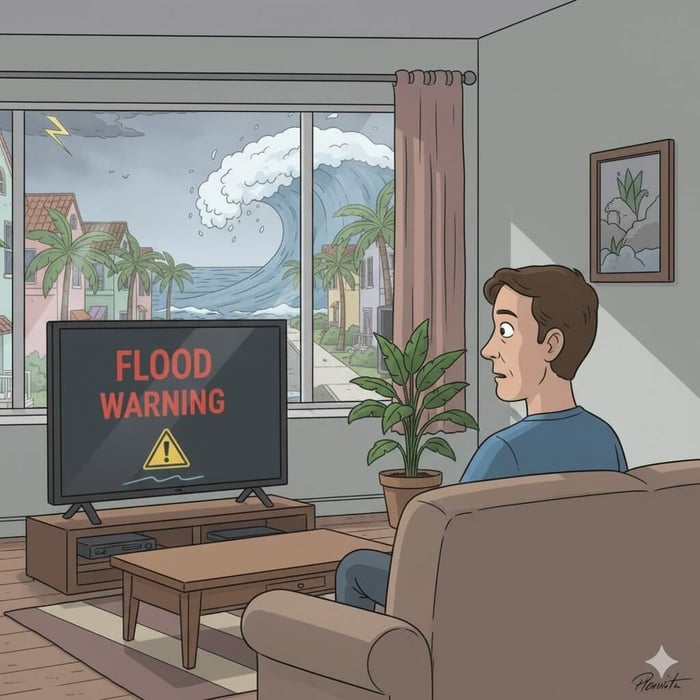 Coastal Flood Warnings are issued when “moderate to major coastal flooding is occurring or imminent”
Coastal Flood Warnings are issued when “moderate to major coastal flooding is occurring or imminent”Protect Your Property:
Clear gutters and drains. Remove leaves, debris, and anything blocking rainwater. Clean gutters on your roof and make sure downspouts are directed away from the foundation. Flood guides emphasize decluttering drains – even Tampa tells residents to clear anything that could block storm drains.
Trim vegetation. Dead branches or trees can fall on your home during a storm. Keep them trimmed back to reduce wind/flood damage.
Seal openings. Check seals around doors and windows. Install flood vents or backflow valves if you have a basement or sump pump. On a sticky note: “Repair broken seals on windows and doors” – a tiny fix that can prevent a leak.
Elevate valuables. In flood-prone areas, move furniture and electronics up onto higher floors or shelves. Follow Brisbane’s advice and put valuables and electronics on high shelves or upstairs when floods threaten.
Think of Special Needs: If you have pets, seniors, or anyone with disabilities, plan for their needs (meds, equipment). Brisbane’s guide also suggests including pet food and info on the animal’s pet preparedness.
Sign Up for Alerts: Get local weather/flood alerts on your phone. NOAA’s Weather Radio app or local government alerts can warn you of watches/warnings. Listen to news updates when a storm is brewing.
Emergency Contacts: Keep a list of phone numbers (family, neighbors, utilities, insurers, Red Cross, etc.) in your kit and phone.
Stock Up on Preparedness Supplies: Keep sandbags or alternatives ready (even though we’ll discuss better barriers soon). FEMA’s NFIP says you can even get reimbursed (up to $1,000) for supplies like sandbags or plywood to prevent damage, if you have flood insurance. It’s a small fund to remind us: flood insurance is about reducing loss, not covering it all.
By checking off this list before a storm hits, you’ll greatly reduce panic and damage. In Florida or Australia, where floods can strike often, these preparations aren’t overkill – they’re smart.
Traditional Flood-Fighting Methods: Pros and Cons
When floodwaters threaten, most people think of sandbags. Sandbags can work in a pinch: you fill them with sand or soil, tie them off, and stack them to try to block water. Here’s how sandbags work—and why they fall short:
How to Use Sandbags: You need a lot of labor. Each sandbag (about 15kg of sand) covers roughly 8 inches of door height. To hold back just 20 cm (~8″) of water at a standard doorway, experts say at least 6 sandbags (tightly stacked) are needed. Filling and hauling dozens of 30‑lb sandbags takes hours (and many pairs of gloves!). You also must stack them carefully (offset like brickwork) and bend plastic sheeting over the ground to block leaks.
Shortcomings: Sandbags aren’t perfect. Over time, they absorb water and leak. Flood experts note that they “absorb water, and over time, they become less effective” as they saturate. Even well-stacked bags can have tiny gaps, allowing water to seep through and ruin items inside. Cleanup is messy: after a flood, the sodden bags are heavy and contaminated; most of them need to be thrown out. In fact, sandbags often become garbage after use – a costly, wasteful approach.
Safety and Storage: Transporting sandbags is hard on the back, and storing piles of sandbags in a garage is a nuisance. Government guides warn that filling sandbags is “a physically demanding activity… they can get heavy quickly”. If you don’t use the sandbags, you can’t really store waterlogged bags at home; they will rot if wet, and dry out to dust if not.
In summary, sandbags work for low, short-duration floods as a last-ditch measure, but they’re slow, dirty, and unreliable for serious events. They’re a single-use, single-threat solution – one you hope you never have to repeat. A modern homeowner deserves better.
Modern Flood Protection: Introducing Dam Easy Barriers
Fortunately, there are now smarter, faster, reusable alternatives to sandbags. Dam Easy® Flood Barriers are engineered for homeowners who need a real solution. These aluminum flood gates work like magic – they deploy in minutes, form a tight seal, and can be stored compactly for years of reuse.
The Dam Easy Flood Barrier: Your Front Door’s First Line of Defense
For example, Dam Easy’s main “Door Dam” barrier seals a standard front door against floodwater. It swings into place and inflates a seal around the frame.
Think of the Dam Easy Flood Barrier (sometimes called the Door Dam) as a protective flood gate for your doorway. It’s an adjustable aluminum panel with an inflatable rubber gasket. One flood gate covers most single-door entrances (it expands from about 30¾″ up to 43¼″ wide). Installation is shockingly simple – the company says it can be done in under 5 minutes. In practice, you just put the barrier snug into the door frame (no drilling needed!), then pump air into its built-in tube. As the seal inflates, it presses against the frame and floor, creating a watertight barrier. Dam Easy even calls it “off-the-shelf and ready-to-use” – you don’t need a contractor or tools.
Flood Barrier Door Dam - Ultimate Flood Gate

$949.00
DAM EASY® FLOOD GATE - DOOR DAM Floods are becoming more common around the world. What was once a 100-year phenomenon is now a seasonal trend that homeowners must deal with. That’s EXACTLY why you need this Dam Easy Flood… Read More
Once in place, this flood gate is highly effective. A unique pneumatic seal (an inflatable tube around the edges) locks water out completely. Even if your doorway isn’t perfectly straight or has minor gaps, the seal adjusts to block leaks. Unlike sandbags that can only push water, the Dam Easy barrier stops water dead. It’s made of sturdy aluminum, so it won’t warp or float away, and it meets European flood standards.
Benefits at a Glance:
Fast deployment: “Quick Installation” in minutes – no more filling hundreds of sandbags at midnight.
No heavy lifting: Weighing about 45 lbs, it’s portable but much less work than dozens of heavy bags.
Reusable & clean: After the storm, the barrier comes out easily, dries, and goes back in storage. No mud-dirty disposal required.
Adjustable: Fits many door sizes (30.75″–43.25″) and can even be combined with extensions for larger openings.
Effective Seal: As Dam Easy explains, the pump-inflated tube “inflates a tube around the outside of the barrier… leaving it water tight” – far better than sandbag gaps.
In a nutshell, a Dam Easy flood gate becomes your front door’s first line of defense against floodwaters. For homeowners tired of struggling with sandbags or wishful thinking, it’s a game-changer. It literally sits in front of your door when needed, so “no water gets in” during a flood.
The Dam Easy Mini Barrier: Protecting Sliding Doors, Patios, and Interior Spaces
For smaller openings like sliding-glass doors or patio doors, Dam Easy’s Mini Barrier is the go-to solution. It’s compact but just as quick to set up.
Not every flood gate needs to be 4′ wide. Dam Easy’s Mini Barrier is a scaled-down version perfect for narrow openings – think sliding glass doors, patio doors, lanai entrances, or even interior thresholds. It spans about 20.3″ to 26.5″ wide making it ideal for slim doorways or window wells. Installation is just as easy as the big barrier: position it, extend the side panels, and inflate the seal. Dam Easy boasts that the mini unit “can be easily installed in under 5 minutes without any complex tools or labor”. In other words, anyone can do it quickly – no handyman skills needed.
Once set, the Mini Barrier offers the same reliable protection: “the first line of defense to prevent water from entering doors and windows”. It’s especially great for sliding doors, picture windows, or between garage sliders to garages – any place a flood might creep in near the floor level. And like its larger sibling, it’s reusable. When the storm passes, just deflate, fold it up, and store it. No residue, no muss.
Mini Barrier
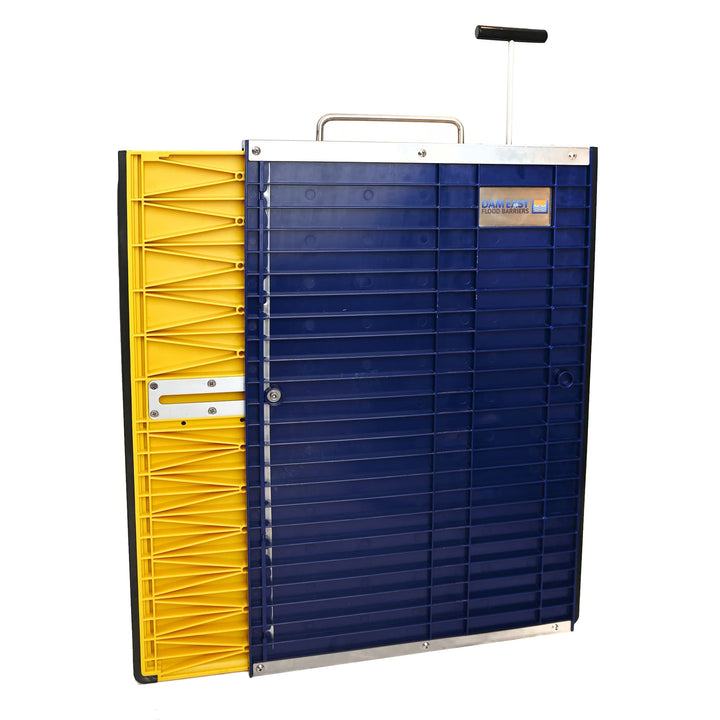
$739.00
The Mini barrier is a smaller version of the dam easy barrier, smaller in width, the span is from 515mm - 675mm (20.27 inches - 26.5 inches)… Read More
To cover a wide patio or double doors, you can use multiple barriers side-by-side. Dam Easy even shows owners stacking these mini panels along a deck or entryway, all linked by what’s essentially a continuous pump-inflated wall. It’s a modular system: small spots or big spaces, it adapts.
Maximizing Your Protection: Essential Accessories
Even the best barriers need a little help for unconventional openings. Dam Easy offers a couple of accessories that make your flood defense even more flexible:
Extension Pole: This nifty device lets you link multiple barriers. Say you have a double garage door or extra-wide patio. You install two barriers end-to-end and anchor them with the Dam Easy Extension Pole. It anchors in a drilled hole in the ground, with a capped post that stands flush when not in use. When needed, the pole slides in and “two or more barriers can be connected together with the aid of our extension pole”. The result is one long flood gate, perfect for garages, wide patios, storefronts, or any large opening (even elevator shafts or loading bays, per the manufacturer). Best of all, the pole installs in seconds and holds the barriers tight at ground level – with no bulk when flood-free.
Extension Pole
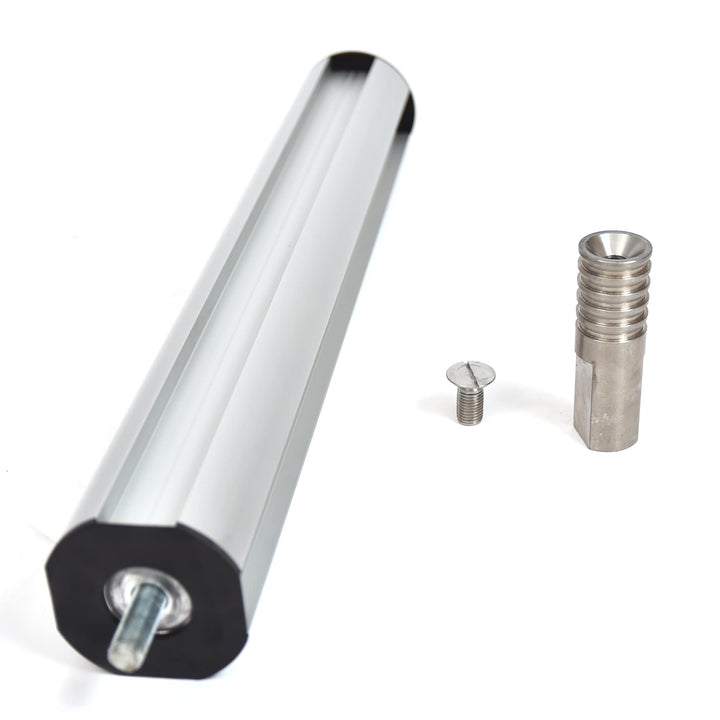
$399.00
The Dam Easy Extension Pole DamEasy Flood Barriers allow you to effortlessly protect your house or business from flooding. Our flood barriers fit any door passage and seal it securely, preventing floodwater from coming in. But what if you need… Read More
Replacement Seal: The Dam Easy barriers use an inflatable rubber seal to block water. Over time, this seal can wear from sun, heat, or contact with sand and debris. Dam Easy has you covered with inexpensive replacement seals. In fact, they recommend swapping in a new seal every 12 months to keep your barrier as good as new. The company explains that the seal might corrode or stretch over years, but since the barriers are modular, the seal is easily replaced by the homeowner. (This means your barrier stays “as efficient after several years of use as it was when it saved your house”) For a few bucks and a couple of minutes, you’ll maintain 100% protection for seasons to come.
Replacement Seal for Dam Easy Barrier
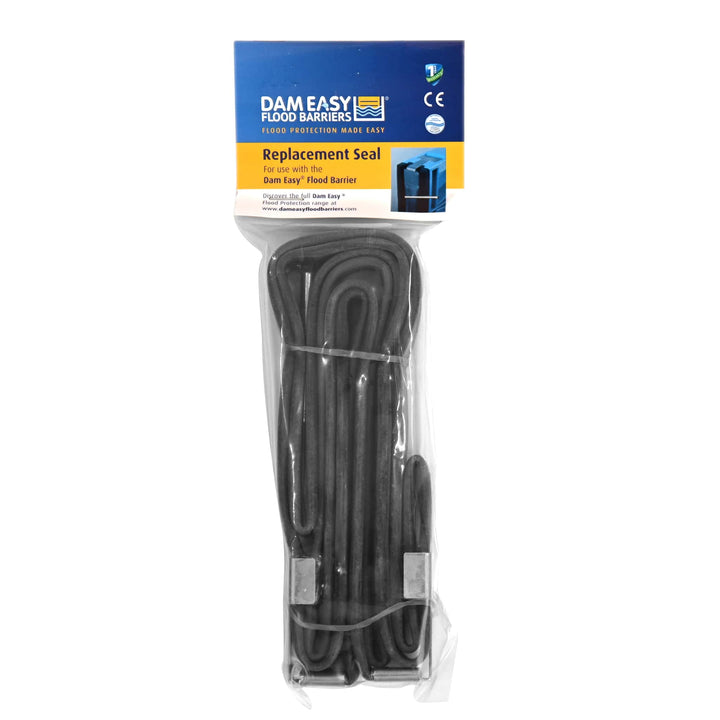
$20.00
One of the main benefits of our flood barriers is their versatility. Indeed, with the help of just one flood control solution, you can easily and securely seal any door or passage. Our flood barriers fit and adjust to your… Read More
With the right setup – a main Door Dam at your entry, Mini Barriers at sliders, extensions for big gaps, and fresh seals each year – you’ll have a complete flood gate system that can literally button up your entire house against water. For example, a homeowner in Naples, Florida (where coastal flood warnings are common during king-tide season) can deploy Dam Easy barriers in minutes and avoid $thousands in repairs. Likewise, a Brisbane family has peace of mind knowing their flood barriers are ready if the Brisbane River rises.
Conclusion
Coastal flood warnings shouldn’t take you by surprise. By understanding your risk, following a clear preparedness plan, and using the right tools, you can protect your home and peace of mind. Don’t rely on last-minute heroics – take charge now. Upgrade from sandbags and make flood readiness part of your routine. For instance, a Naples homeowner who installs Dam Easy barriers before hurricane season ends up staying dry, while neighbors without them may spend months rehabbing soggy floors. Same for Brisbane residents when storms arrive.
It all comes down to one thing: acting before the water arrives. Equip your doors and openings with proven flood barriers. Keep your family and valuables high and safe. And when coastal flood flood warnings sounds, you’ll know you’re ready.
For the ultimate home flood barrier and accessories, visit Dam Easy’s site and start securing your home today. Don’t wait until it’s too late – flood protection is a modern must-have.
Protect your home now, and sleep soundly through the next storm.
FAQs
What’s the difference between a flood advisory, watch, and warning?
In plain terms: Watch means flooding could happen—be ready (conditions are favorable). Warning means flooding is happening or about to happen—take action now. Advisory means only minor nuisance flooding is expected—be cautious. For example, NOAA explains a
- Flood warning is issued when flooding is imminent or already occurring. A flood watch means flooding is possible in the next day or two (not guaranteed). And an
- Advisory is for nuisance flooding that’s not severe enough to trigger a warning. In coastal terms, a Coastal Flood Warning is a serious alert (“moderate to major flooding is occurring or imminent”), while a Coastal Flood Watch means such flooding is possible.
Always treat warnings and watches as cues to prepare immediately.
Are sandbags or flood barriers better?
Flood barriers (like Dam Easy’s) are generally a smarter, more reliable choice than sandbags.
Sandbags can slow water temporarily, but they have big downsides: they’re heavy to fill (each ~15 kg bag blocks only ~20 cm of water, they leak through gaps, and they become waste after one use.
Flood Risk experts note that sandbags “absorb water, and over time… become less effective”. By contrast, a modern flood barrier panel is lightweight, reusable, and forms a tight seal (no leaks).
In practice, one Dam Easy barrier can replace dozens of sandbags – far less labor, and far more assurance.
Does flood insurance cover everything?
No – and that’s one reason flood protection is vital.
Most standard home insurance explicitly excludes floods. To cover flooding you must buy a separate policy (often through the NFIP or a private insurer).
Even then, flood policies have limits: for homes NFIP covers up to about $250,000 for the building and $100,000 for contents. So if your house and belongings are worth more than that, or if you have high deductibles, insurance could leave gaps.
That’s why reducing flood risk with barriers and preparation is so important – it fills in where insurance might not.
How do I install a Dam Easy Flood Barrier?
Very easily. To protect a standard door, you simply drop the Dam Easy Flood Barrier into your doorway and tighten it up. Then use the built-in hand pump to inflate the seal around it.
No drills, no tools.
Dam Easy barrier can be installed in under 5 minutes. (One quick test: put the barrier against the bottom of the door frame, press or latch it into place as instructed, then pump. That’s it.)
For a sliding door, use the Mini Barrier the same way. Even connecting two barriers together with the extension pole takes just seconds.
The barrier’s own manual and online videos walk you through it step by step.
What maintenance does the flood barrier need?
Very little. After a flood season, wipe the barriers clean and store them dry. The main upkeep is the inflatable seal: Dam Easy recommends replacing this rubber seal roughly once a year.
The seals can wear from sun or chemical exposure. A replacement kit costs only ~$20 on the official site.
Swapping the seal keeps the gate fully watertight like new. Other than that, check that the aluminum parts aren’t bent or overly dirty, but they’re designed for years of heavy use.
Where can I learn more or buy Dam Easy barriers?
Visit Dam Easy’s official website to explore products and get expert advice.
We have a Flood Barrier Door Dam and a Mini Barrier with full specs.
Customers can also use our FREE online calculator to determine how many barriers you need.
Remember, these barriers are an investment in peace of mind: you’re buying readiness against a threat that saves money and trauma later.
Open AI Tools (or press CTRL twice)
Open AI Tools (or press CTRL twice)
Open AI Tools (or press CTRL twice)

